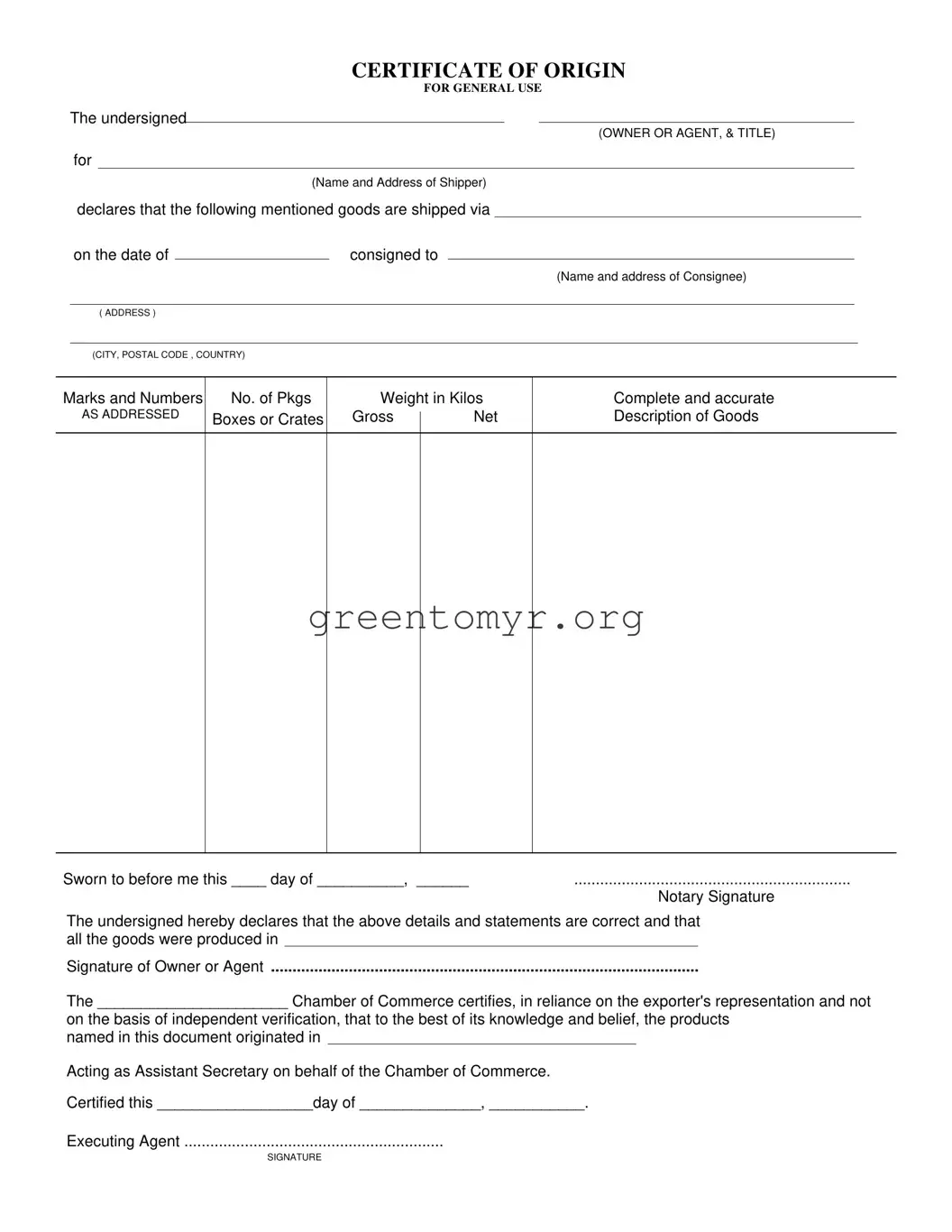CERTIFICATE OF ORIGIN
FOR GENERAL USE
The undersigned
(OWNER OR AGENT, & TITLE)
for
(Name and Address of Shipper)
declares that the following mentioned goods are shipped via
on the date of |
|
consigned to |
|
(Name and address of Consignee)
( ADDRESS )
(CITY, POSTAL CODE , COUNTRY)
Marks and Numbers
AS ADDRESSED
No. of Pkgs Boxes or Crates
Complete and accurate Description of Goods
Sworn to before me this ____ day of __________, ______................................................................
Notary Signature
The undersigned hereby declares that the above details and statements are correct and that all the goods were produced in
Signature of Owner or Agent ...................................................................................................
The ______________________ Chamber of Commerce certifies, in reliance on the exporter's representation and not
on the basis of independent verification, that to the best of its knowledge and belief, the products named in this document originated in
Acting as Assistant Secretary on behalf of the Chamber of Commerce.
Certified this __________________day of ______________, ___________.
Executing Agent ............................................................

